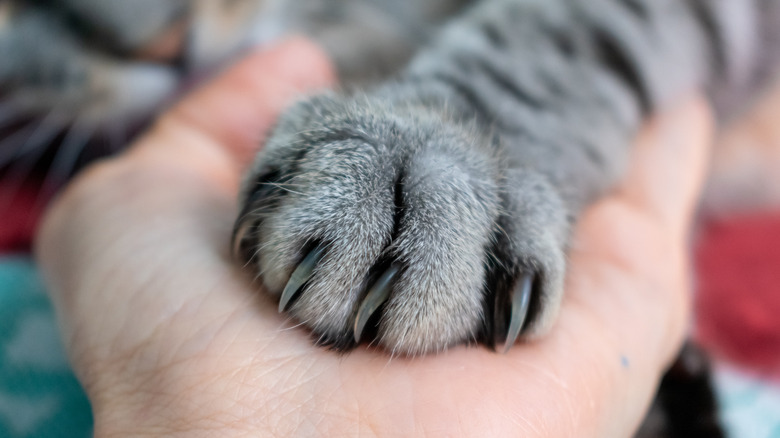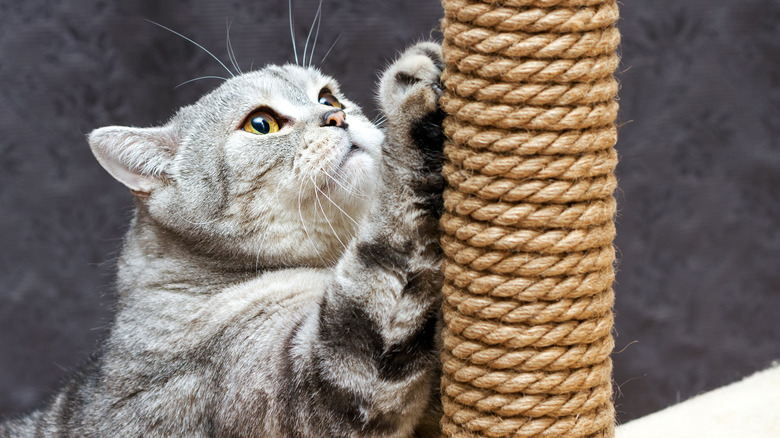Is Declawing A Cat Necessary?
Is your cat scratching the furniture and walls? Have you tried just about everything to change her behavior? In this case, you might be thinking about declawing, a type of surgery that involves removing a cat's claws. Also known as feline onychectomy, this procedure is highly controversial and carries serious health risks, from infection and nerve damage to bone spurs. Plus, it can affect your cat's ability to jump, climb, and defend herself from other animals, warns the Society for Prevention of Cruelty to Animals (SPCA).
If you decide to declaw your furry friend, it's best to do it around the age of six to 12 months, according to the vets at Arnold Pet Station. The surgery is usually performed on healthy animals and requires general anesthesia. Note, though — declawing involves amputation of the last bone of each digit, which ensures that your cat's claw won't grow back. "It would be equivalent to cutting off the tips of your fingers at the knuckle just below the fingernail," explains Dr. Jo Myers (via PawTracks). The recovery process is often slow and difficult, causing significant trauma. "In some cases, a cat carries permanent pain or injury as a result of the declaw," says Dr. Myers.
Despite these risks, feline declawing is legal in most states and cities. The question is, should you do it? Is declawing a cat necessary, or are there safer options available? Let's see what the experts have to say about it.
Cat declawing is rarely a medical necessity
Cat declaw surgery has been banned in the State of New York and several major cities, including Austin, Los Angeles, Denver, and San Francisco, according to the Humane Society of the United States (HSUS). However, most states still allow it — especially if it's performed for medical reasons, such as a mangled toe or bone tumor. But these instances are rare, says the American Association of Feline Practitioners. This invasive procedure is rarely a medical necessity and has both immediate and long-term implications.
The HSUS points out that scratching is considered normal behavior in felines, one that allows them to mark their territory, defend themselves, and get a good stretch. That's why the American Animal Hospital Association recommends managing this behavior through appropriate training and the use of scratching posts or other accessories rather than declawing. For example, you can purchase artificial nail claps and slide them over your cat's claws to prevent her from damaging the floors.
There are instances when declawing makes sense, notes the American Veterinary Medical Association — but it should be your last resort. If your cat's scratching behavior poses risks to children or other members of your household, then your decision is justifiable. However, this controversial procedure can lead to other behavioral problems, such as biting. Moreover, one in five cats develop back pain, arthritis, limping, and other long-term complications following the surgery, warns the HSUS.

